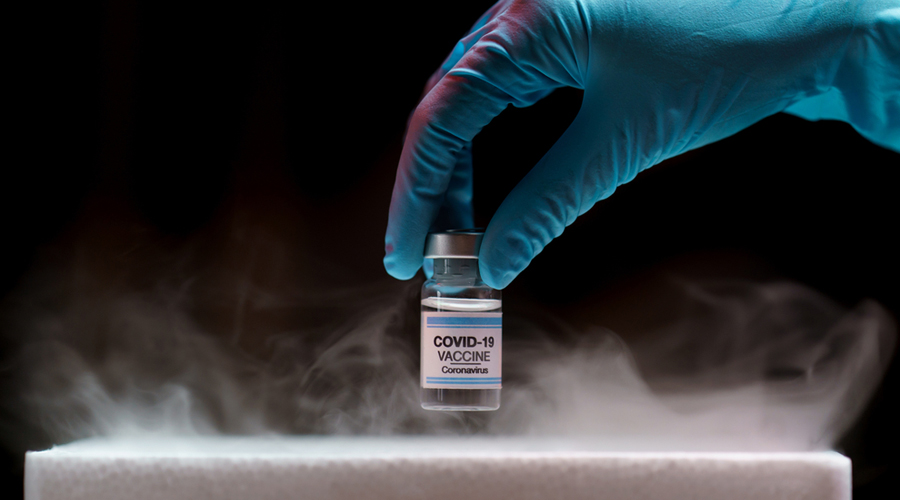It was just a year ago, in December 2019 that we first got to know about this new guest to this planet, the novel coronovirus SARS-CoV-2. During the last 13 months scientists worldwide have accomplished an unbelievable feat. This is for the first time that not one but several vaccines have been approved for an infection which started just a year ago.
It’s true that scientists haven’t had enough time to fully characterise the nature of protection and especially the duration of protection offered by the vaccines, as the passing of time is the only way to derive that kind of data. Nevertheless, a number of these vaccines have been meticulously shown to induce an efficacious immune response against the virus and till the time they were followed up in the respective phase 3 trials they offered recipients considerable protection from natural infections.
Most vaccines are designed to target the spike protein of the virus. For example the Oxford vaccine Chadox1 nCoV-19, or its Indian avatar Covishield, uses an adenovirus and introduces the SARS-CoV-2 spike gene into it. The Pfizer-BioNTech COVID-19 vaccine BNT162b2 and the Moderna vaccine mRNA-1273 use modified RNA molecules encoding spike protein encapsulated in sub-microscopic bags made of lipid.
These vaccines are expected to train the recipients’ immune system to recognise this protein and to mount a response in the form of producing antibodies to it, which can block the spike protein of the virus during a natural infection and prevent the virus from infecting human cells. The vaccines are also expected to generate a potent T cell repertoire, another arm of the immune system, which can also recognise the virus and eliminate the infected human cells, to stop propagation of the virus within the body.
Unfortunately at the same time, just a year from first encounter with the virus, on December 21, 2020, health authorities from United Kingdom published a technical briefing document that reported cases of infections in southern England by SARS-CoV-2. But there was an alarming change: this was a different strain of SARS-CoV-2, or the so-called ‘UK strain’.
A number of other strains have also been notified from different parts of the world. Mutations in viruses are very common. Replication of a virus inside human cells involves copying the genetic material with random accumulation of errors, which are largely corrected by inherent proofreading mechanisms. When these fail the errors stay back as mutations.
For RNA viruses, like SARS-CoV-2 (with its genetic code being written on a molecule called RNA), the proofreading mechanisms are characteristically weaker and the chances of such errors are greater. The only notable change in the UK strain was an increased transmission, causing the infection to spread more rapidly. This is also scary as a faster spread of infection means a rapid influx of patients that can potentially overwhelm healthcare facilities. But for India the rate of accumulation of new cases has declined considerably so this should not create much of a problem for some time now.
Available data assert that the mutations in these new strains are not enough to make the virus change the way it affects the human body or cause disease. But a more recent report has raised concerns about a slightly number of case fatalities. The final word on this is not yet out and will come only after a larger study is available. There’s no evidence yet to indicate a change in severity of the symptoms or outcomes.
But a number of mutations encountered in these new strains of SARS-CoV-2 affected the spike protein. And this has raised concerns about the efficacy of the available vaccines against the new strains. As I explained the vaccines primarily are expected to generate antibodies to spike, as it was in the original strain. Whether these antibodies may fail to recognise the mutated spike is the question. Let me explain a little bit why it may happen.
The spike protein, like any other protein, is made of a chain of molecules called amino acids. Imagine you have a necklace of coloured beads on your palm. You close your fist and the necklace folds onto itself in a complex structure. Now imagine that there are rules that ensure even in that apparent free-form complexity only specific coloured beads can only come close to each other, thus restricting shape options for the folded necklace. Proteins are similar necklace-like molecules with chemicals called amino acids as the beads. The immediate environment of the protein molecule (especially water present in the immediate environ) acts as the closed fist. Now if a few beads are removed or changed in colour, its shape also changes.
Antibodies do not recognise the actual sequence of amino acids in a protein. They actually recognise the surface elements or topology, e.g. specific grooves, folds, loops or pockets on a protein. Any change in this surface topology of spike could result in the antibody not recognising the protein. Of note here, not only vaccines, the much used convalescent plasma therapy is also based on this recognition of viral proteins by antibodies that block its function and thus prevent the virus from infecting human cells.
Mutations reported in the new strains do change the sequence of amino acids in SARS-CoV-2 spike. More importantly some of these changes affect a part of the protein which is usually targeted by the neutralising antibodies, known as the receptor binding domain or RBD.
For example strains reported from UK and South Africa both have a mutation called N501Y (in simpler terms the 501st amino acid is changed, as per my allegory the bead in that position has changed colour) in that crucial part of spike protein. The South African variant has additional mutations E484K and K417N in the same region. A variant reported from Brazil was found to have mutations for both N501Y and E484K. Thus it raises the concern of substantially changing that crucial region of spike, so as to modify its structure and surface topology. Will the antibodies fail to recognise this changed face of spike? There are indeed chances this could happen.
A similar phenomenon has recently been reported in a study, where scientists found that in the case of another coronavirus (called 229E), neutralising antibodies present in convalescent plasma against earlier strains failed to show activity against later strains.
In the case of SARS-CoV-2 too, with the Brazilian E484K variant it has been shown that plasma from convalescent donors, who recovered from infection with the original SARS-CoV-2 virus, was less efficacious to neutralise LATER variantS. Fortunately for the Pfizer-BioNtech vaccine we have relevant data available that shows the N501Y mutation cannot evade the immune response to this vaccine. Similar data generated with the other vaccines will be more reassuring and needs to be generated.
These mean that even if vaccines are there and we are really excited about that, we should be vigilant and keep on following the protective drill of social distancing and mask usage. On the other hand, major effort should go into sequencing a large fraction of new cases for detecting any new variants that may arise.
More importantly, independent research efforts should be taken up to monitor the recipients of all different vaccines, so that any case of vaccine failure (reinfection in a vaccine recipient) is notified. A comprehensive post-vaccination immune monitoring will also help us gather valuable insights on the nature of immune protection these different vaccines are capable of offering, especially in terms of duration of such protection and vulnerability of that protection to new variants, if any.
Dipyaman Ganguly is a physician scientist and immunologist at the CSIR-Indian Institute of Chemical Biology, Calcutta. He is actively engaged with research on patients with COVID-19.











